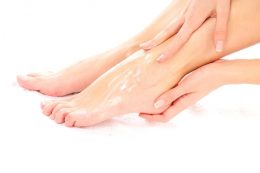Tagged with #diabeticfootcare …
How To Manage Symptoms of Diabetic Feet
When you have high glucose levels, you are more likely to develop foot diseases such as diabetic neuropathy and peripheral vascular disease. These conditions may cause numbness, pain, tingling, increased risk of infections, and slow-healing injuries.
Aside from the discomfort, diabetic foot problems can also affect your daily life, as they may prevent proper stability and functionality of your feet. So, it’s best to learn how to manage and ease these symptoms. Here are some tips to help you:
Check Your Feet Daily
When you have diabetes, you may experience numbness in your feet, which prevents you from feeling cuts or scratches. So, it’s crucial to inspect them every day. If you do so, you can treat your feet immediately and prevent potential infections from occurring. It would be best if you also looked out for blisters, ingrown toenails, or any signs of swelling, redness, or sore spots. If you find any, talk to your foot doctor.
Wear Proper Footwear
Choosing the right well-fitting footwear lessens the risk of blisters and calluses forming on your feet. So, it’s best to do a foot measurement on your own or with the help of a professional whenever you’re buying new shoes. You should also avoid wearing high heels or pointed shoes since they may put excess strain on the front of your feet.
Monitor Your Blood Sugar
Since high glucose levels are the main reason for diabetic foot issues, keeping them under control is essential. You can do so by maintaining a healthy diet, checking your blood sugar, and taking the necessary medications prescribed by your doctor.
Exercise Regularly
Staying active is greatly beneficial if you have diabetes. Doing so helps improve blood circulation and control your blood sugar levels, easing pain caused by a foot disease. You may start with a regular walking routine or consult your podiatrist on the best form of exercise for your condition.
Stop Smoking
Among the negative effects of smoking is poor blood circulation, which can increase your risk of diabetic foot disease. So, it’s best to break the habit as early as possible if you are a smoker. If you find it difficult, consider a tobacco cessation program.
Consult a Foot Doctor Near You
Now that you know about these tips, you can prevent symptoms of diabetic foot problems from worsening. If you experience unusual pain or want a professional assessment, reach out to Thomas Podiatry & Associates in Salisbury, MD. Our physicians will gladly assist you with your diabetic foot care needs.
Diabetic Foot Care Tips To Keep Your Feet Healthy
Diabetes may cause various negative consequences on your feet. This is because diabetic neuropathy, the numbing of the feet, occurs when you have diabetes. Aside from that, diabetes also causes poor blood circulation, which prevents cuts or wounds on your feet from healing quickly, resulting in infections.
Because of this, ensuring the proper care of your feet is crucial. There are many ways you can keep them healthy and prevent potential foot complications. Here are some of them:
-
Inspect Your Feet Everyday
Since it’s common for people with diabetes to have numbness in their feet, it’s important to check for any signs of foot issues as much as you can. Always check your feet for cuts, swelling, blisters, redness, or any changes in your skin and nails. Doing so will help you address any diabetic foot problems and prevent them from worsening.
-
Always Wear Well-Fitting Shoes
Wearing shoes that are too big or too small may cause your feet to get squeezed or rubbed while wearing them. This may cause painful blisters, calluses, or bunions. So, it’s crucial to always get well-fitting footwear. You may also consider getting orthotic shoes to ensure you have the right-sized shoes.
-
Never Go Barefoot
As they say, prevention is better than cure. For that reason, protecting your feet by wearing shoes or socks all the time is essential. Doing so will prevent you from getting scrapes, scratches, or cuts without noticing since diabetes can numb the senses on your feet.
-
Keep Your Feet Dry and Moisturized
Whenever you wash your feet, it’s important to dry them completely afterwards, especially between the toes. This is because the skin there is airtight, and leaving them damp may lead to fungal infections. Since diabetes also causes dry skin, moisturizing your feet is essential. But be sure your skin is not wet or sticky, and avoid putting lotion between your toes.
Talk to a Reliable Podiatrist
For people who have diabetes, learning more about diabetic foot care helps prevent the risk of foot infections or non-healing wounds. If you have an existing condition or notice any unusual symptoms, it’s best to reach out to a foot doctor. Contact us at Thomas Podiatry & Associates in Salisbury, MD for details about our podiatric services.







